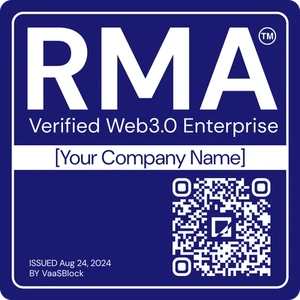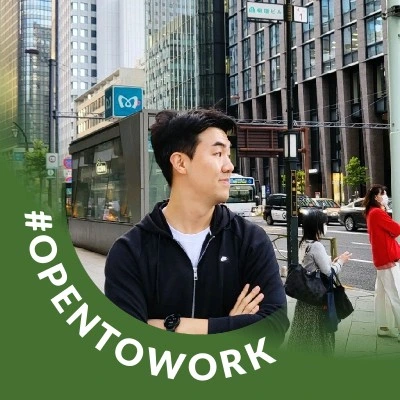
Sky Money
Risk Management
?Risk Management
The RMA™ is a blockchain credibility certification assessing governance, transparency, security, and results, providing trusted verification for businesses in Web3.
VaaSBlock has not audited this project and cannot vouch for this organization.
RMA™ Status: ❌ Unverified
Verification of 6 major compliance criteria.
Technology
?Technology
A collection of public facing information, data collected through partners and our own tools view we present a projects technology in one place for easy verification.
Analysis and testing of tech infrastructures.
Marketing
Alpha?Marketing
Top level look at a projects marketing capablities currently in alpha this section will grow to show quickly how a project promotes itself and the effectiveness.
Screening of user base and community feedback.
Background
?Background
Using multiple public facing sources across the web view a summary of a projects purpose, key achievements and general overview.
Collection of basic administrative documentation.
Risk Management
Last Updated
2025/4/16
Transparency
Transparency Score
Algorithmic assessment of a project’s transparency level, using multiple public data points to measure its commitment to compliance, documentation, and clarity in communication.
Transparency Score
Category Rank
A ranking that positions the organization among its industry peers, evaluating its relative performance based on key compliance, credibility, and transparency indicators.
Category Rank
Sky Money vs Banking & DeFi
VaaSBlock Rank
A global ranking that compares the organization against all entities listed on VaaSBlock, reflecting its overall credibility, transparency, and operational performance versus the full Web3 ecosystem.
VaaSBlock Rank
Sky Money vs All Listed Organizations
Transparency
Transparency Score
Transparency Score
Algorithmic assessment of a project’s transparency level, using multiple public data points to measure its commitment to compliance, documentation, and clarity in communication.
Category Rank
Sky Money vs Banking & DeFi
Category Rank
A ranking that positions the organization among its industry peers, evaluating its relative performance based on key compliance, credibility, and transparency indicators.
VaaSBlock Rank
Sky Money vs All Listed Organizations
VaaSBlock Rank
A global ranking that compares the organization against all entities listed on VaaSBlock, reflecting its overall credibility, transparency, and operational performance versus the full Web3 ecosystem.
RMA™
✘ UnverifiedCorporate Governance
The verification of fundamental governance, organizational structure, including verifying the entity’s legal registration and adherence to local laws and regulations.
Corporate
Governance

Team Proficency
Evaluation of an organization’s personnel, ensuring that crucial team members possess the expertise and dedication necessary to execute current business models and scale effectively.
Team
Proficiency

Technology & Security
Assessment of the organization’s technological framework, including blockchain integrations (where relevant), system architecture, and overall IT infrastructure.
Technology
& Security

Revenue Model
Comprehensively evaluation of a company’s income-generating strategies (how do they make or intend to make money), ensuring financial robustness and sustainability.
Revenue
Model

Results Delivered
The Results Delivered component of the RMA™ audit comprehensively evaluates an organization’s ability to achieve its goals and honor its commitments.
Results
Delivered

Planning & Transparency
The Planning and Transparency component of the RMA™ audit offers a thorough assessment of how an organization manages its workflow and prepares for unexpected challenges.
Planning &
Transparency

Technology
Marketing
Marketing Effectiveness
This score assesses the impact of detected marketing activity and the corresponding price movement of a token. The score understands whole market movements to ensure tokens are assessed fairly against peers.
Marketing Effectiveness
Confidence Index
This index determines our confidence in the score we have given. Generally, as more data is collected, the confidence index will increase. If a project has lots of activity, this confidence is earned faster.
Confidence Index
VaaSBlock Rank
This identifies where a project sits compared to all projects accessed for Marketing Effectiveness.
VaaSBlock Rank
Sky Money vs All Listed Organizations
Marketing Effectiveness
Marketing Effectiveness
This score assesses the impact of detected marketing activity and the corresponding price movement of a token. The score understands whole market movements to ensure tokens are assessed fairly against peers.
Confidence Index
Confidence Index
This index determines our confidence in the score we have given. Generally, as more data is collected, the confidence index will increase. If a project has lots of activity, this confidence is earned faster.
VaaSBlock Rank
Sky Money vs All Listed Organizations
VaaSBlock Rank
This identifies where a project sits compared to all projects accessed for Marketing Effectiveness.
No Chain No Gain™ Podcast ⛉
This Organization is yet to join the No Chain No Gain™ Podcast and share insights on what makes their business trustable and innovative.
💡 NCNG generated over 1 Million impressions in its first six months of existence.
PR Impact
PR Impact
VaaSBlock provides estimations to the impact that traditional digital media can have on a project. This is an early release; more areas of PR are planned in future versions.
Search Terms ? Search TermsThese are the terms we discovered the article for on page one of Google. | Est. Traffic ? Estimated TrafficWe estimate how much traffic an article will get. Generally, our estimations are slightly higher than those of more established tools. We are working on the algorithm all the time, and results could change. | Est. Value ? Estimated ValueBased on the estimated traffic we generate an estimation for what this traffic would have cost to generate if you tried to target these users with ads. The positions for the article on google and the location of the traffic are the major factors in this estimation. | |||
|---|---|---|---|---|---|
Sky.money – Decentralized Finance | IQ.wiki source: iq.wiki | Sky.money – Decentra… — Sky.money – Decentralized Finance | IQ.wiki source: iq.wiki | Organic | iq.wiki | ||
Sky source: Coingecko | Sky… — Sky source: Coingecko | Organic | coingecko.com | ||
What is Sky Protocol? | Messari source: messari.io | What is Sky Protocol… Seen 27 juil. 2025 What is Sky Protocol? | Messari source: messari.io | Organic | messari.io | ||
SKY – Cryptocurrencies | IQ.wiki source: iq.wiki | SKY – Cryptocurrenci… — SKY – Cryptocurrencies | IQ.wiki source: iq.wiki | Organic | iq.wiki |
| Est. Traffic | Est. Value | ||
|---|---|---|---|
Sky.money – Decentra… — | |||
Sky… — | |||
What is Sky Protocol… Seen 27 juil. 2025 | |||
SKY – Cryptocurrenci… — |
Background
Organization Name – Sky Money
Category –  Banking & DeFi
Banking & DeFi
About
powered by irmaAI
irmaAISky.money is a decentralized financial ecosystem designed to reimagine and expand upon the original vision of MakerDAO. Developed through the MakerDAO “Endgame Plan” and officially rebranded in 20…24, Sky.money introduces a new framework for stablecoin issuance, cross-chain liquidity, and decentralized governance. It is built to support economic resilience and scalability in the Web3 space by integrating a suite of products focused on capital efficiency, multichain interoperability, and long-term decentralized coordination.
At the center of the Sky.money ecosystem is USDS, a new stablecoin intended to replace the legacy DAI token. USDS is designed to be robust, censorship-resistant, and fully collateralized, with on-chain transparency and mechanisms to preserve its soft peg to the US dollar. It is governed by decentralized participants, with its monetary policy and collateral portfolio steered by votes within the broader Sky governance framework.
Sky.money incorporates elements of real-world asset backing, decentralized collateral, and protocol-controlled liquidity to stabilize and grow USDS circulation. As part of its incentive model, users can earn passive income through the Sky Savings Rate (SSR), a mechanism that distributes interest-bearing yield to USDS holders. This allows passive DeFi participants to benefit from the platform’s economic activity while providing foundational demand for the stablecoin.
One of the key innovations introduced with the Sky.money rebrand is SkyLink, a native cross-chain bridging protocol. SkyLink enables USDS and other ecosystem assets to flow seamlessly between supported chains without dependence on centralized bridges. This is critical for multichain expansion and positions Sky.money as a scalable platform able to integrate across emerging Layer-1 and Layer-2 blockchains. SkyLink also introduces a system of native tokens that adapt to each chain’s liquidity, ensuring frictionless DeFi experiences across networks.
Sky.money also introduced Spark, a key user-facing product suite for lending and borrowing, initially launched under MakerDAO but later folded into the Sky.money branding. Spark allows users to borrow USDS against crypto collateral, similar to how DAI operated within the original MakerDAO system. As the protocol evolves, Spark is expected to expand its feature set, potentially integrating real-world collateral and advanced interest rate mechanisms.
To encourage community engagement and DAO participation, Sky.money launched the Spark Star initiative, a rewards program designed to identify and incentivize early contributors, voters, and protocol users. This initiative laid the groundwork for a more inclusive, transparent, and active governance culture within the Sky ecosystem. Additionally, the Sky Token Rewards mechanism allows for broader utility and staking opportunities tied to protocol activity and voting power.
Governance in Sky.money is layered and modular. The core of its long-term strategy is grounded in the Endgame Plan proposed by Rune Christensen, MakerDAO’s co-founder. This plan envisioned a segmented ecosystem of subDAOs—smaller, semi-autonomous governance entities—that operate different aspects of the system under a shared set of rules and values. Sky.money retains this modular structure, allowing it to scale while managing complexity through specialization and structured delegation of responsibilities.
Sky.money is also notable for its long-term approach to decentralization. The Sky Constitution—a governance document written into the protocol—outlines core values like neutrality, resilience, and scalability. By embedding these ideals into the design of protocol mechanics and organizational structure, Sky.money aims to ensure that it remains resistant to regulatory and political pressure, especially in environments where centralized stablecoins face increased scrutiny.
The platform also represents a strategic pivot from MakerDAO’s earlier era. It separates itself from legacy DAI infrastructure and introduces a new brand identity focused on clarity, growth, and accessibility. While DAI continues to circulate, the transition to USDS marks a new chapter where the protocol moves toward greater autonomy, wider adoption, and an expanded economic footprint.
Since its rebrand and the launch of the Sky.money domain, the platform has continued to gain traction across DeFi communities. Governance activity has increased, new liquidity pools have been seeded across multiple chains, and integrations with prominent DeFi protocols have begun. As of mid-2025, the ecosystem supports multiple chains, with USDS live on Ethereum mainnet, Optimism, Arbitrum, and additional networks via SkyLink.
In terms of security, the protocol continues to prioritize on-chain verifiability, open governance, and the avoidance of blacklisting or centralized control mechanisms. USDS is promoted as a censorship-resistant stablecoin, with the team reaffirming commitments to neutrality and composability in smart contract ecosystems.
Sky.money’s vision is expansive. Beyond USDS, the team plans to launch additional products, including advanced liquidity vaults, integrations with real-world payment rails, and potentially the launch of localized stablecoins under the same architectural principles. These developments are aimed at transforming Sky.money into a global liquidity layer for permissionless finance.
The ecosystem remains governed by the same community that supported MakerDAO, but with new tools, branding, and architecture that enhance scalability and reduce governance fatigue. The goal is to create a resilient financial system that can serve millions of users across different jurisdictions, blockchains, and use cases—without relying on traditional intermediaries.
Overall, Sky.money is a comprehensive evolution of MakerDAO’s infrastructure, rebranded to reflect a broader mission and equipped with tools designed for multichain, modular, and decentralized deployment. It builds on over five years of learnings from MakerDAO’s economic experiments and proposes a system that can meet the next decade of Web3 demands with transparency, innovation, and economic alignment. Read More
Creation Date
November 2025
Headquarters
Unknown
Organization Maturity Level
Growing Business
RMA™ Type
–
Useful Links
Website – sky.money
Notable Achievements
2024
Rebranded from MakerDAO
2024
USDS stablecoin launched
2024
SkyLink cross-chain system live
- vaasblock.com /
- Banking & DeFi /
- Sky Money












